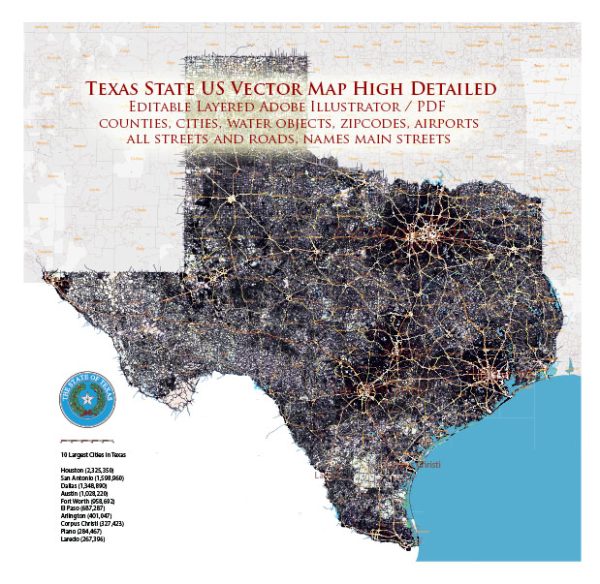The urban development of Texas State, particularly in the context of U.S. history, is a complex and dynamic story that reflects the state’s evolution from a primarily agrarian and rural society to a diverse and urbanized landscape. While it’s challenging to provide an exhaustive overview, I can offer a general description highlighting key historical periods and trends.
- Pre-Columbian Era:
- Before European contact, indigenous peoples such as the Caddo, Apache, and Comanche inhabited the region. Their settlements were often influenced by geography and natural resources.
- Spanish Colonial Period:
- Spanish explorers, including the famous Alonso Álvarez de Pineda, first entered the area in the early 16th century. Spanish missions were established to convert and educate the native populations, contributing to the early settlement patterns.
- Mexican Period:
- After gaining independence from Spain in 1821, Mexico controlled Texas. During this time, land grants were issued to settlers, attracting Anglo-American immigrants.
- Republic of Texas:
- Texas declared its independence from Mexico in 1836 and became an independent republic. During this period, urban development was limited, with the focus on establishing sovereignty.
- Annexation and Statehood:
- Texas joined the United States in 1845. The development of urban centers started to gain momentum with the growth of trade, agriculture, and transportation.
- Civil War and Reconstruction:
- The Civil War had a significant impact on Texas, but the state’s economy rebounded during Reconstruction. Railroads expanded, connecting cities and facilitating economic growth.
- Late 19th Century:
- The discovery of oil in the early 20th century brought rapid economic development. Cities like Houston and Dallas became major hubs for the oil industry.
- Early to Mid-20th Century:
- The development of transportation infrastructure, including highways and airports, further spurred urbanization. The post-World War II period witnessed population growth and suburbanization.
- Late 20th Century to Present:
- Texas experienced a boom in technology, finance, and healthcare industries. Cities like Austin became tech hubs, while Dallas and Houston continued to grow as major economic centers. Urban sprawl and issues related to infrastructure, water resources, and environmental sustainability became key concerns.
- Diversity and Culture:
- The urban development of Texas reflects its diverse cultural heritage, with influences from Hispanic, African American, and other communities contributing to the unique character of cities.
- Challenges and Opportunities:
- Texas faces challenges related to urban sprawl, transportation, and infrastructure. However, it also presents opportunities for sustainable development, cultural enrichment, and economic innovation.
In summary, the history of urban development in Texas is marked by a convergence of cultural influences, economic drivers, and geographic factors. It continues to be a dynamic process shaped by a mix of tradition and modernity.


 Author: Kirill Shrayber, Ph.D.
Author: Kirill Shrayber, Ph.D.